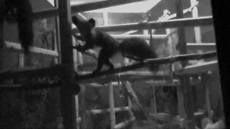Sigma Xi 2017 Student Research Showcase
Anthropology
 A Preliminary Comparison of Morphological Features of the Extinct Giant Aye-Aye (Daubentonia robusta) and Extant Aye-Aye (Daubentonia madagascariensis).
A Preliminary Comparison of Morphological Features of the Extinct Giant Aye-Aye (Daubentonia robusta) and Extant Aye-Aye (Daubentonia madagascariensis).
Taylor Nguyen, North Carolina State University
The aye-aye (Daubentonia) is a monotypic genus belonging to the Primate suborder, Prosimii. There is one extant species, D. madagascariensis (D. mad.), in Madagascar, and it is known for its distinct anatomic structure. Subfossils dating to less than ~1,000 years ago of a giant version of the present day aye-aye were found in arid environments in the south and southwest regions of Madagascar (Simons 1994). They were brought back to the Institut de Paléontologie in Paris, and were identified as belonging to the species, D. robusta (Simons 1994). In this study, a comparison of dimensions and robusticity of the anatomy of the extinct and extant aye-ayes was undertaken.
 Who’s That? Can Nocturnal Aye-Ayes (Daubentonia madagascariensis) Determine Who is Talking?
Who’s That? Can Nocturnal Aye-Ayes (Daubentonia madagascariensis) Determine Who is Talking?
Quentin Watts, North Carolina State University
Animals use varying communication methods to broadcast their location, reproductive status, reassure group members, etc. Communication of nocturnal species potentially contain more information. Aye-ayes (Daubentonia madagascariensis) are a nocturnal lemur (Family: Lemuridae). Aye-ayes have a total of six vocalizations (Stanger & Macedonia, 1994). The vocalizations can convey individual location, aggression, and converse with potential mates (Saint-Hilaire et al., 2004). However, much is still not known about aye-aye vocalizations, including whether or not identifying information is transmitted in vocal calls. Therefore, in this study, the vocalizations of captive aye-ayes at the Duke Lemur Center were examined to see whether or not they contain information about the identity of the caller.